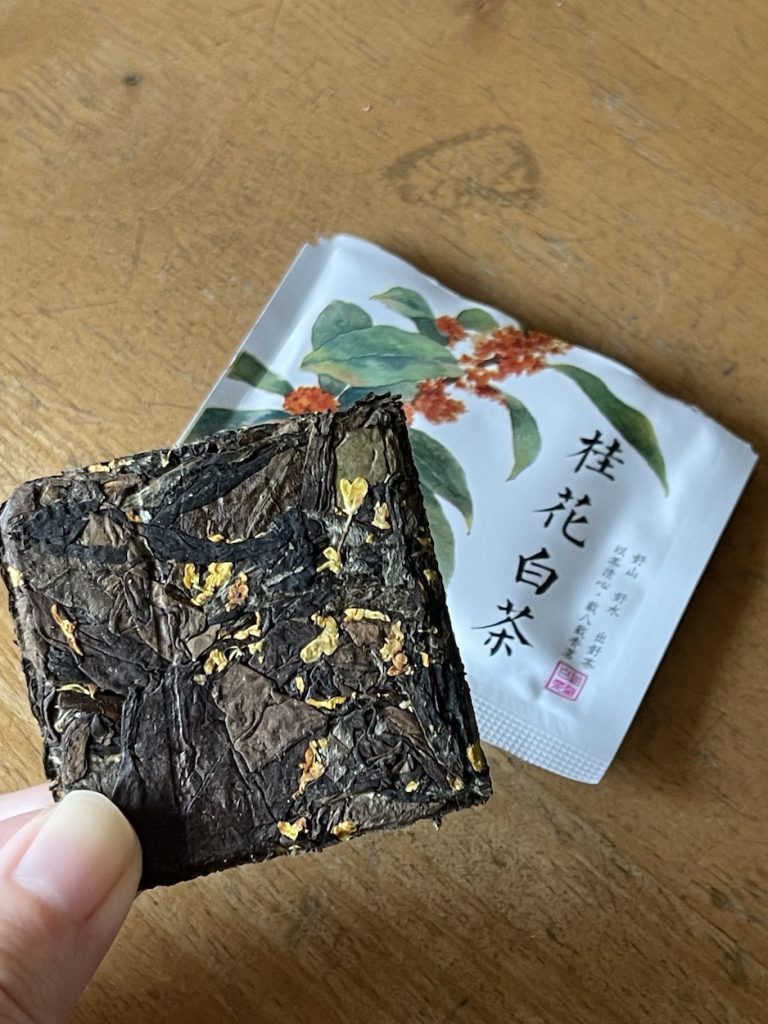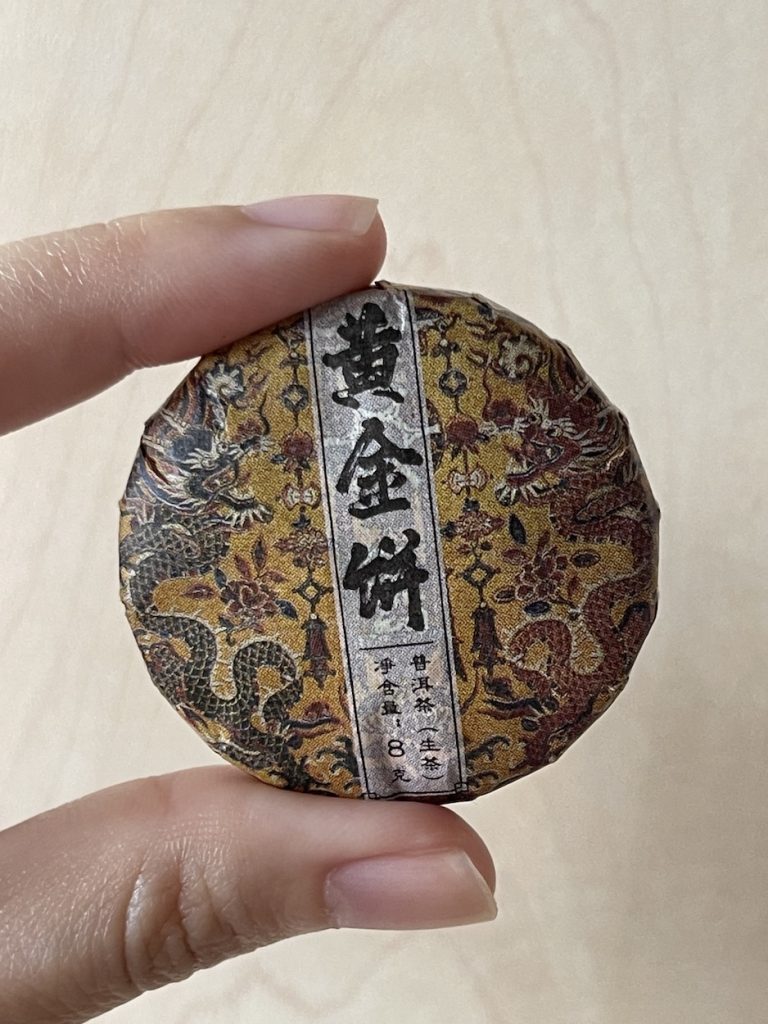Hi all, I’m quite determined to finish this series in this post so buckle up because it’s going to be looooong.
桂花红茶 (Osmanthus Black Tea): The tea cake smells strongly of osmanthus and the tea pretty much tasted like it. Somehow the tea wasn’t as sweet as I expected (especially given the strong osmanthus scent, something I associate with desserts). I felt like the black tea wasn’t strong enough to match the osmanthus; possibly something richer was needed. I couldn’t shake the feeling that this tea was made to mask the flaws of the black tea.

桂花白茶 (Osmanthus White Tea): Yes, another osmanthus tea! The smell of osmanthus hits you once you pour the hot water in. The first cup tastes purely of osmanthus but from the second cup onwards, I started getting the grassy white tea notes. I found that the notes of the tea tended to get stronger as the notes from the osmanthus got weaker, which made for an interesting tasting journey.

Golden Leaf: This was a very thin, leaf shape tea-cake. It smells like white tea but it looks somewhat aged. Perhaps because it’s very thin, the tea cake has loosened by the second steep. The tea starts off as a golden colour and smells like a raw puer, but tastes pretty mild – vegetal with some bitterness. The bitterness goes away in later steeps but I suspect this was a raw puer; albeit one that was gentle on the stomach.
Speaking of golden teas, I was suddenly reminded of a time when a local tea brand decide to coat their tea leaves in 24k gold. To be very honest, I have doubts about the taste of these because… won’t they taste like metal? (I’m also not so curious that I’ll buy this to try but if you have tried it, you have to let me know what you thought of it!)
未来可期:There was absolutely no description to this tea other than the phrase on the wrapper. The first steep had a “clear” taste, very sweet and floral but the second steep had a smoky note in it. I thought this was a tisane but after drinking, I think it’s a floral tea blend.

黄金拼 (Golden cake): This one is a raw puer and the leaves honestly look quite big. The initial cup is sweet and grassy with no bitterness or astringency. It’s actually quite sweet, I got a floral note later on. It’s a pretty drinkable raw puer, and I liked it because it was easy on the stomach.
菊花白茶 (Chrysanthemum White Tea): From the second cup onwards, this tea tastes strongly of chrysanthemum and the white tea notes were very muted. While you can strengthen the white tea notes with a longer steep, it somehow made the chrysanthemum notes seem weaker? But by the end of the tea session, I thought the two ingredients started to harmonise a bit better – definitely a tea that requires some patience!
枣香寿眉: Again, this is not a tea I recognise but it tastes like it is made from large leaves, I got a sort of rougher note while drinking. The tea leaves smell like wet leaves after rain, if that makes sense. I also had a woody note that was similar to the woody note in some types of Japanese black teas, which is interesting and also confuses me because I’m not sure what tea this is.
紧压白茶(贡眉): The chinese says that it’s a compressed white tea. The tea leaves look very big and perhaps that influenced my tasting of the tea because I thought it tasted sweet but leafy. I also got mild woody notes and generally I thought it was very similar to the previous tea.

玫瑰白茶 (Rose White Tea): There is a strong rose note here while the white tea notes are more subtle. I’m wondering if white tea tends to emphasise the second ingredient more compared to black tea – the rose is definitely stronger here. The tea cake is loose by the fourth steep but even in the later cups, I taste mostly rose instead of white tea.
And there you have it! I should have reviewed all thirty tea samples that I bought. I’m hoping I didn’t miss any out. But erm, I still have more Chinese tea that I’ve not even touched so I will definitely still be doing quick tea reviews (or perhaps more in-depth ones, if possible) in 2024!
